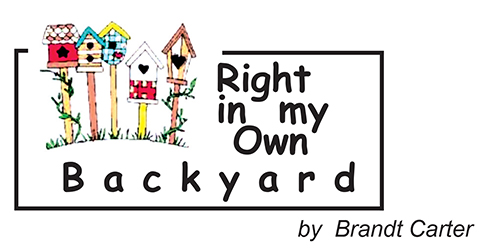
|
Broad Ripple Random Ripplings

The news from Broad Ripple
Brought to you by The Broad Ripple Gazette
(Delivering the news since 2004, every two weeks)

|
| Brought to you by: |

|

|

|

|

|

|
Converted from paper version of the Broad Ripple Gazette (v13n12)
Right in my Own Backyard - Beginning Birdwatching 2 - by Brandt Carter
posted: Jun. 10, 2016

Beginning Birdwatching 2
If you read the last issue, you would have gotten your first birdwatching lesson. So here are five more common birds you might see in Broad Ripple. Again I encourage you to get outside and look around. You never know what bird will sing you a song and brighten your day with a flight to watch.
Mourning Dove*

image courtesy of Bob Moul
Mourning Dove* For casual watchers, the mourning dove and rock pigeon may be confused. Upon closer look and study the gently mourning dove is a joy to watch. The cooooOOOOO-woo-woo-woo call is soft and mournful. They are seed eaters, and you will see them under a birdfeeder finding millet and dropped seeds. Rather than easting the seeds immediately they store them in their crop for later.
You will see them also in woodland lots. They make loose nests in brush, evergreens, gutters and eves. Mourning Doves are the most frequently hunted species in North America, and I am sure this is not allowed in the village. They remain one of our most abundant birds with a U.S. population estimated at 350 million.
Canada Goose

image courtesy of Jan Luckett
Canada Goose This goose has no problem taking up residence in the rivers, mini lakes and retentions ponds surrounding the village. Considered a nuisance because of their lack of respect for personal property, poor waste habits, aggressive behavior and begging, and noise, this goose does not migrate as thought. Environmentalists agree that the abundance of food keeps them in the village. They usually love the territory they have staked out.
If you see them fly, they do form the customary V-shaped formation. Yes it is called the Canada Goose, not Canadian Goose. They are also hunted. I am sure some residence would like to see open season on these pesky geese.
Mallard

image courtesy of Jan Luckett
Mallard The Mallard duck is a major resident of the Canal and ponds around Broad Ripple. The male is a combination of beautiful colors in contrast to the drab, brown speckled female. The mallards eat water plants and small animals.
They are very social preferring to congregate in groups or flocks of varying sizes. They are dabbling ducks. They can have 8-13 eggs. The hatchlings are at great risk from predators like turtles, hawks, raccoons, opossums, skunks and large fish.
American Goldfinch*

image courtesy of Bob Moul
American Goldfinch* Canary and yellow bird are some of the names people call the American Goldfinch. The goldfinches are here all year round but the male changes color to a grayish green in early October and only molts to bright yellow with black forehead, black wings with white markings in spring. Goldfinches are fun to watch because they are very busy and their flight is lilting and acrobatic.
They can be found in weedy fields and floodplains where wild thistle and asters grow. They enjoy feeders filled with nyger seed (thistle) all year round. They can even eat upside down at a feeder. They will not nest until last summer and do not nest in birdhouses. PS. The nyger seed is sterilized so if you have thistles in your yard, it is not from the birdseed.
Downy Woodpecker*

image courtesy of Bob Moul
Downy Woodpecker* Woodpeckers are really fun to spot because they have unique characteristics. The Downy is small and not much larger than nuthatches. The Hairy Woodpecker is a bigger version of this species. So this is another pair of birds to learn to identify.
The Hairy is medium-sized with a longer bill and whiter outer tail feathers.
The Downy is smaller, shorter bill with black and white tail feathers.
Both woodpeckers eat insects and scale trees looking for them. They will also come to peanut and suet feeders. They are at home in orchards, city parks, backyards and vacant lots.
If you practice spotting these birds and you have practiced identifying the robin, sparrow, grackle, starling, chickadee, and cardinal, you now can identify quite a few birds. Next step is to record them in a notebook and begin a life list of birds starting with these first 10 - 12 birds you have seen in Broad Ripple and add to them as to location and season. Field Guides and birdwatching apps will help you become more proficient in bird identification. Good luck birdwatching. It's fun to know the birds that frequent Broad Ripple.
Permission was granted by Jan Luckett and Bob Moul* to share their photos with my readers.
Brandt Carter, artist, herbalist, and naturalist, owns Backyard Birds at 2374 E. 54th Street. Visit her web site www.feedbackyardbirds.com. Email your bird questions to Brandt@BroadRippleGazette.com
brandt@broadripplegazette.com

|

|

|
| Brought to you by: |

|

|

|
| Brought to you by: |

|

|

|


